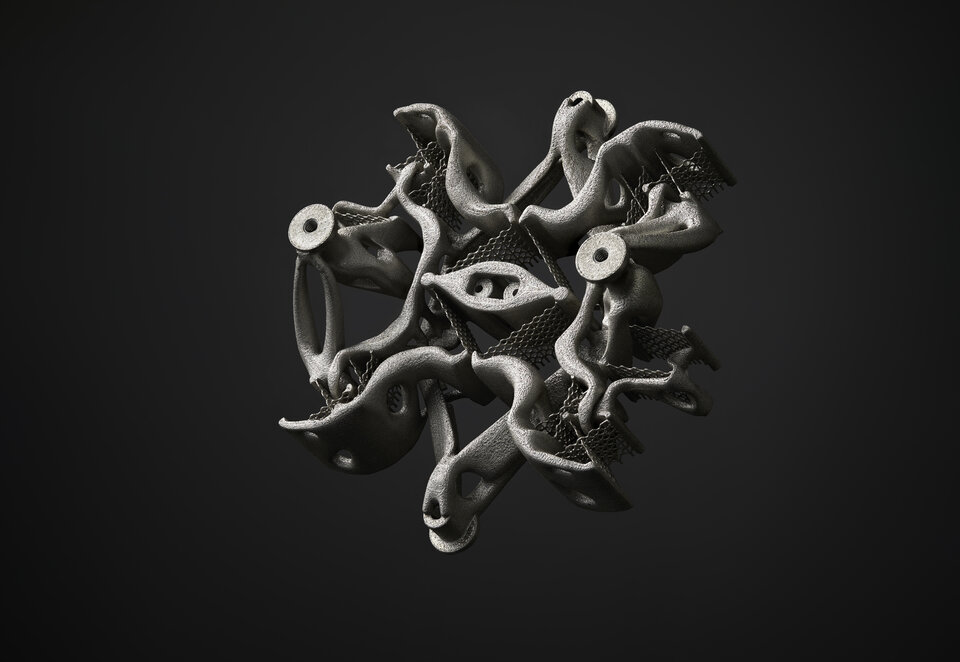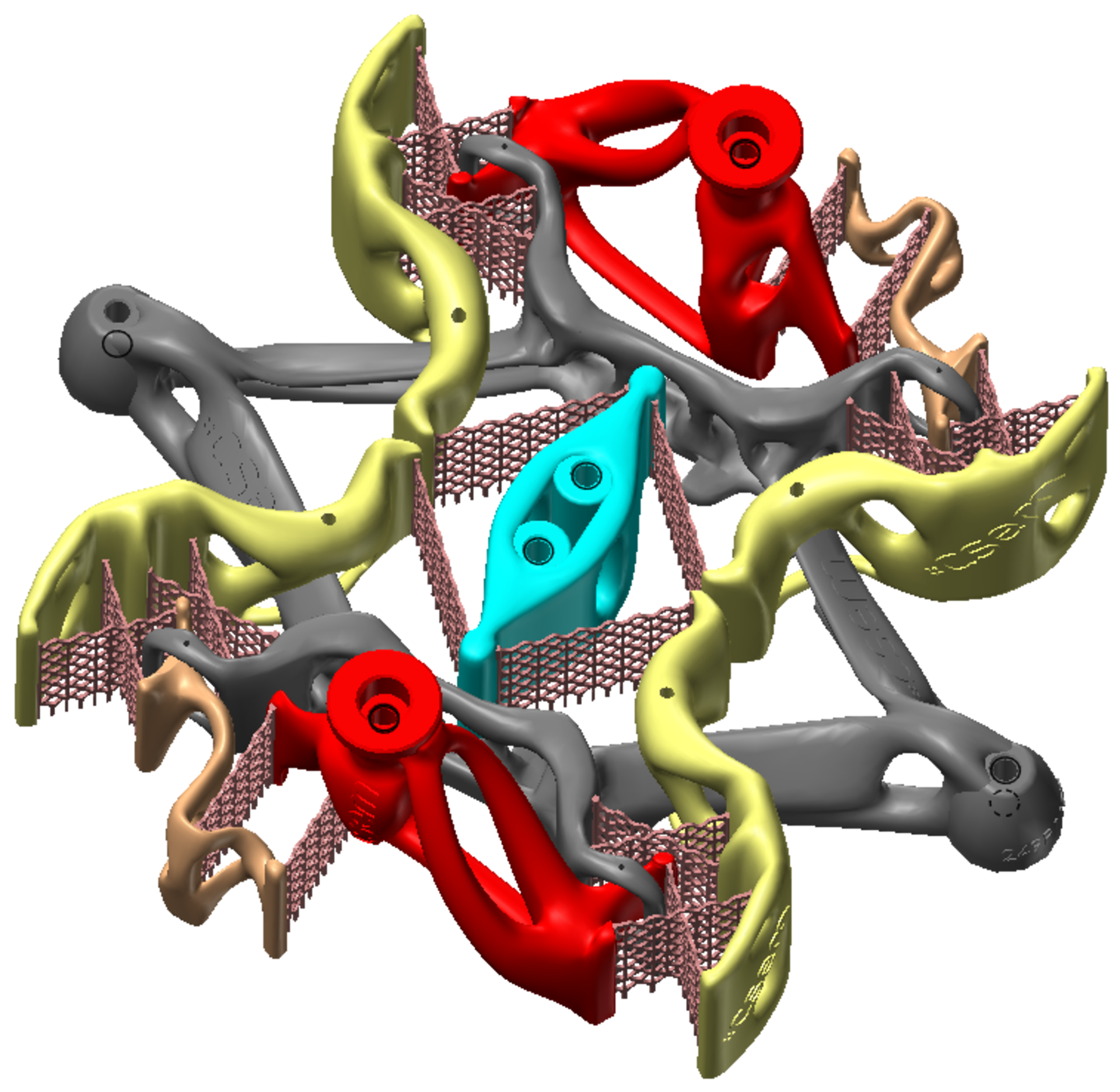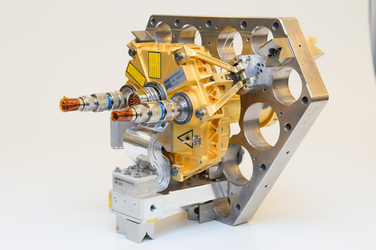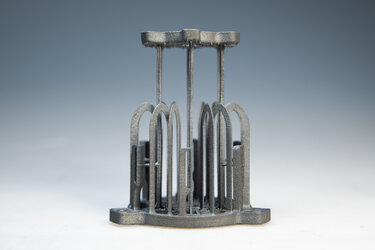Compliant Mechanism Based on Additive Manufacturing - Activity 1
Compliant mechanisms are well known in space applications under different configurations and categories, from flexure joints and pivots to special spring elements or actuation devices. Normally, they are employed where friction-free motion is needed, to ensure high precision and position accuracy, such as in the tilting and tipping of mirrors or thrusters. The design of these mechanisms is notoriously challenging. Compliant mechanisms with complex architecture are generally composed of various precise parts that need to be machined, verified, aligned and fixed together.
Additive manufacturing can allow a freedom in geometry that could mean new designs and extended capabilities for these mechanisms. In particular, the drastic reduction of the assembly process and the possibility to build more complex 3D compliant structures. The absence of friction and wear allows the device to be lubrication-free, extending its life and improving cleanliness while reducing sources of unpredictable errors.
A GSTP funded activity “COMAM” started in 2018, here CSEM (Switzerland) took advantage of its 30 years expertise in compliant mechanisms for space to design the Compliant Rotation Reduction Mechanism (CRRM). The CRRM allows for rotary motion reduction with a factor of 10, a useful function for scanning, pointing, calibration or flip mirror mechanisms. The Additive Manufacturing of the mechanism was performed by a local company 3D Precision, while the performance tests were performed by Almatech SA.

The activity demonstrated the major advantages of additive manufacturing, such as the design freedom and the possibility to build monolithic complex shapes. This design – integrating 24 flexure blades among which 16 are interlocked (patent pending) to form crossed pivots and 8 intermediate stages – would not be possible in such a small volume without the use of additive manufacturing. Moreover, no alignment is needed between the flexure structures to ensure a proper cinematic. Thanks to a thorough combination of parametric and topology optimizations, the mass and eigen-frequencies were significantly improved and provided a first eigen-mode higher than 550 Hz.
Although very encouraging, the performance and lifetime test results suffer from the distortion of the two breadboard models manufactured and tested. Further information about the CRRM development – including test results – is available in the CEAS Space Journal. A video of the CRRM is also available.
To maintain its position of key player in the field of compliant mechanisms, CSEM invested significant resources in parallel to the COMAM project to mature its know-how in design, production and testing of compliant mechanisms based on additive manufacturing. The experience thus accumulated has been recognized by ESA which once again selected CSEM to develop a new mechanism based on additive manufacturing: the CRTM (Compliant Roto-Translation Mechanism). This new TDE project ANGELE started in January 2022!















 Germany
Germany
 Austria
Austria
 Belgium
Belgium
 Denmark
Denmark
 Spain
Spain
 Estonia
Estonia
 Finland
Finland
 France
France
 Greece
Greece
 Hungary
Hungary
 Ireland
Ireland
 Italy
Italy
 Luxembourg
Luxembourg
 Norway
Norway
 The Netherlands
The Netherlands
 Poland
Poland
 Portugal
Portugal
 Czechia
Czechia
 Romania
Romania
 United Kingdom
United Kingdom
 Slovenia
Slovenia
 Sweden
Sweden
 Switzerland
Switzerland





























